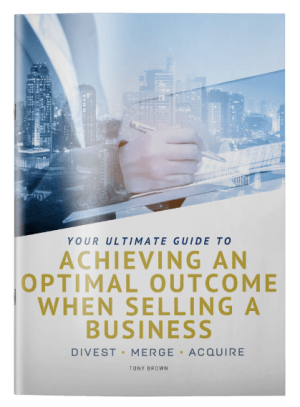Whilst those in M&A readily talk about their successes, the reality is that not every business gets sold.
The reasons are many and varied, and they hold the key to what owners should do if they find themselves still on the shelf after a year or so of being on the market.
Although there may not necessarily be anything wrong, usually reasons can be found in one or more of the following areas:
1. Is something wrong with the business?
2. Is something wrong with the price?
3. Is something wrong with the way it is being marketed?
4. Is something peculiar about the industry the business is in?
5. Is it still too early to expect a result?
To help owners analyse their situation, here are some possible areas to explore under each of the above headings and suggestions as to what can be done about it.
| Possible problems with the business or sale | Possible actions to rectify |
|---|---|
| 1. Something wrong with the business? | |
| Too few customers; high concentration of customers. | Secure key customers with contracts. |
| High dependence on one or several key customers. This increases the perceived and actual risk to new owners. | Agree to the sale being conditional on the customers endorsing the sale to new owner. |
| High dependence on the owners. | Agree to stay in the business for longer. |
| Buyers get so far then stop. | Have all the potential ‘show stoppers’ been identified, with strategies to overcome where possible? |
| Have you received regular feedback as to why target buyers have not proceeded beyond the initial inquiry? | Analyse and rectify issues where possible. |
| 2. Something wrong with the price? | |
| Your advisor should have confirmed the reasonableness of your price expectations, but sometimes things change. | If the sale process has taken longer than you expected, you may have already made up the shortfall in additional profit and can afford to accept a lower sale price. |
| In particular, recent financial results or the latest profit projection,may lower the value. This seems to happen more often than coincidence would allow. I suspect the reason may be that vendors choose to go to market right after having a cracker of a year and hope for a quick sale.Of course, a basic question buyers ask is how the current year is looking and it all falls apart if the result is not backed up. This leaves everyone stranded on price vs profit, plus an added complication of coming off a peak and facing a potential downward slide. Buyers are always looking for a hidden reason why the business is being sold and this hands them one on a plate.
Plus volatility itself undermines confidence and the assessment of maintainable earnings. |
Reassess the price and either lower it or withdraw from the market.If the projection is lower and can be explained, and whether it is short or long term, then make sure this is conveyed properly.
If the latest year’s profit was exceptional, say so and price according to the true maintainable earnings level; and make sure the current year’s projection is supportable and validates it. |
| Do you require all cash up front or are you flexible on the deal structure and timing? This may mean you are prepared to share some of the future risk, commit not just your expertise but also leave some ‘skin in the game’ alongside the buyer. This massively de-risks the acquisition for the buyer (who still accepts most of the risk) and sends a strong signal about your confidence in the future of the business, and in the buyer in particular. |
Within reasonable limits, the more flexible you are, the better the bridge to the buyer and the more likely they will be to proceed. |
| 3. Something wrong with the way it is being marketed? | |
| Is the business being marketed appropriately? Is active marketing being done; and if so, is it targeting the right profiles of investors? Some advisors may have access to a database, but of the wrong types of people eg individual investors when an industry player is the only viable profile, or others may even have no direct access to the target market at all! |
Make sure your advisor understands what the target investor profiles are.Check whether the advisors have the capacity and commitment to reach the target markets. |
| Insufficient responses from the target market. Your advisor should be able to tell you how many target responses there have been to marketing initiatives. Eg between 10 and 100 would seem reasonable. |
Check what marketing has been done and what can still be done. |
| Are the best features of the business being showcased? | Update the IM to include key features/hooks. Apart from the IM being adescriptive and analytical representation of the business and the relevant industry, it is also a marketing document that needs to showcase the best features of the business to set it apart from others on the market in the eyes of target buyers. |
| 4. Something peculiar about the industry the business is in? | |
| Some industries are small. Others are unpopular. Others are an out and out feeding frenzy(egAustralian RTO’s currently)!Also, in times of economic uncertainty and volatility, businesses with strong maintenance or recurring income streams are more highly sought after than those depended on capital projects. | Are there any consolidators currently active in the industry? If so, make sure they know about your opportunity, one way or another. |
| 5. Is it too early to expect a result? Are you just being impatient? | You should allow 3-6 months to complete the process, but should know within 2-3 months whether you have active investors or are in for a long grind. |

